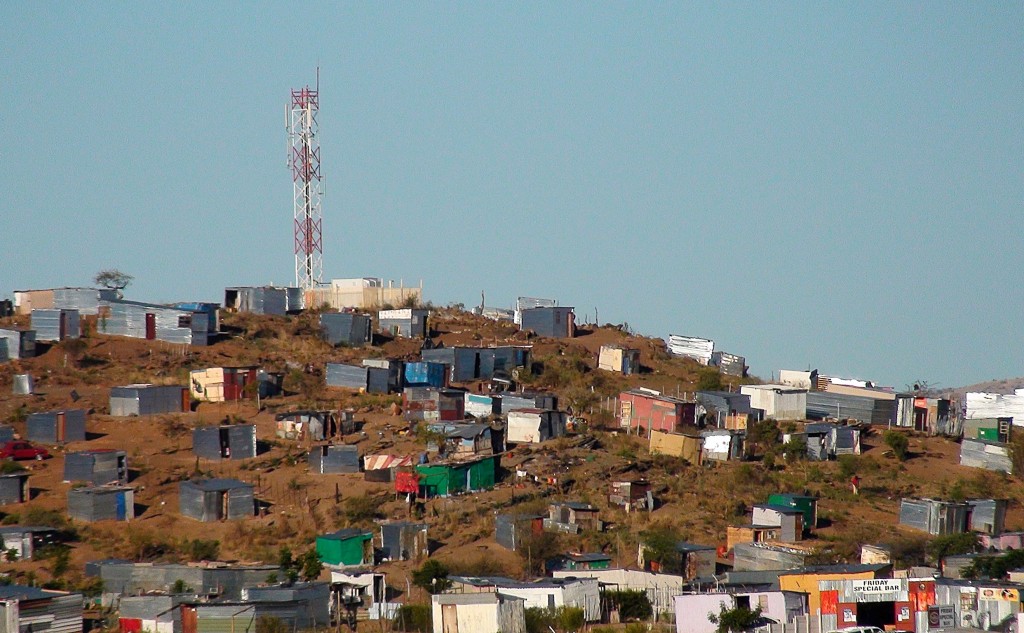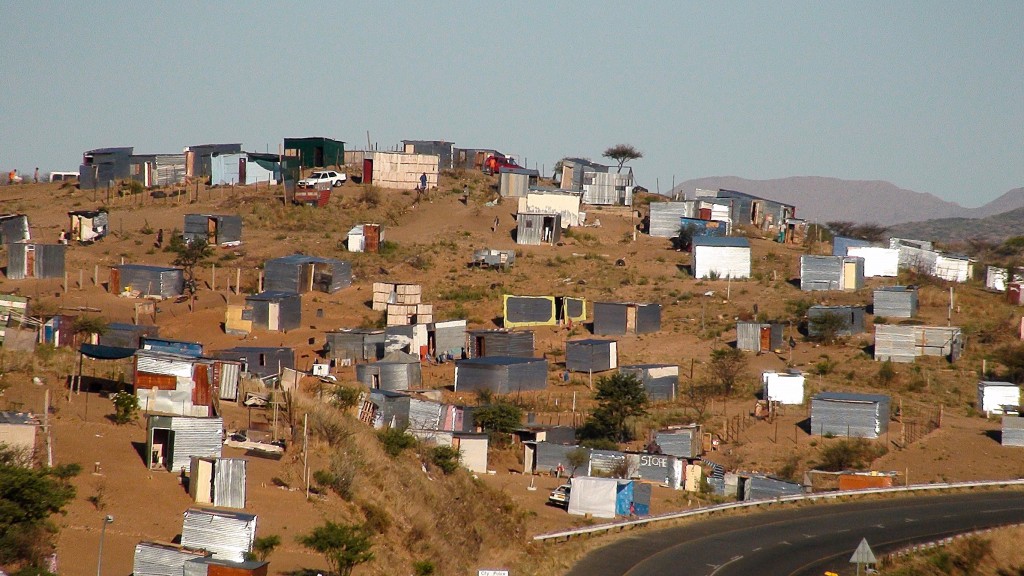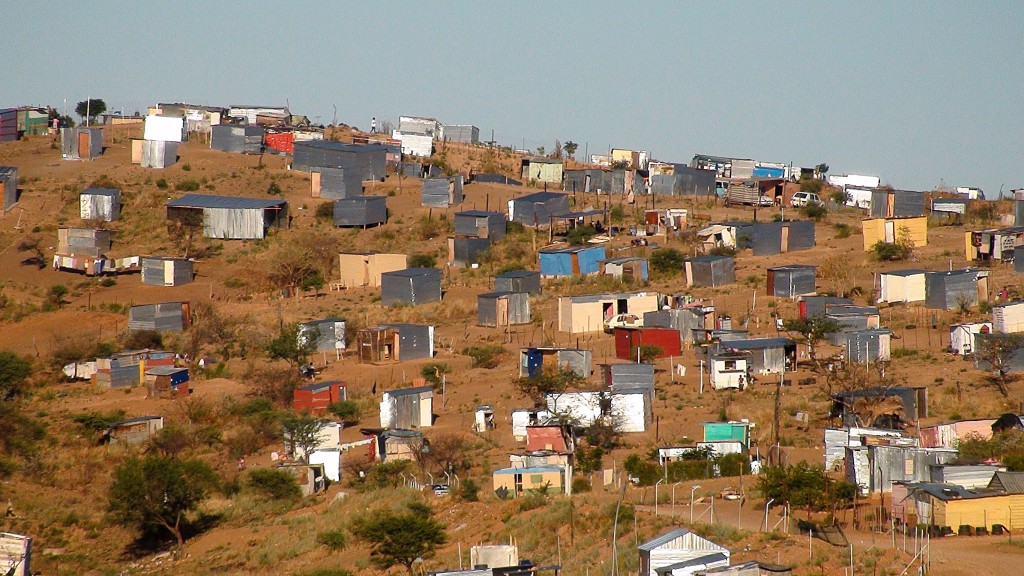According to some statistics, 60 percent of Namibia’s urban dwellers, 25 percent of all Namibians live in so-called “informal settlements.” They come to Windhoek in search of jobs, opportunities and a better life. And in spite of the fact that Windhoek enjoys a reputation as a city which has taken better care of its newest settlers, they are perpetually behind.
Namibia’s former (Apartheid era) township, Katutura is a dense network of symmetrically laid out roads and small, squarish houses laid out in neat rows at close intervals, and activity everywhere. But these settlements are not informal – the city has laid out a grid, named the roads, and at regular interval are water spigots and street lights. They are the envy of the favelas and the shantytowns of the world’s larger cities.

But as you start heading out of town you pass one-room homes of plywood and sheet metal, built at all angles on the hillsides surrounding a clinic or a radio tower. Interspersed among the homes are the southern African bakkies or pick-up trucks – some quite late model – and the occasional SUV. Some of the houses lean impossibly, or are built parallel to the contour of the hillside. Ladies in Victorian dress with their traditional herero hat sweep outside, on weekends men braai or barbecue over a wood fire, and the area is impeccably clean. Yet there is no running water or plumbing, and for miles in both directions on the paved highway one sees men carrying bundles of wood, perhaps to be sold for a few Namibian dollars.







What poverty, we are so lucky.
It was nice to talk to all of you yesterday.
At night we went to dinner at Horatio`s, very nice an good food.
Have a house full of flowers, love it and have to look and see what I am going to get
from Amazon.
Thank you very thoughtful,
oma